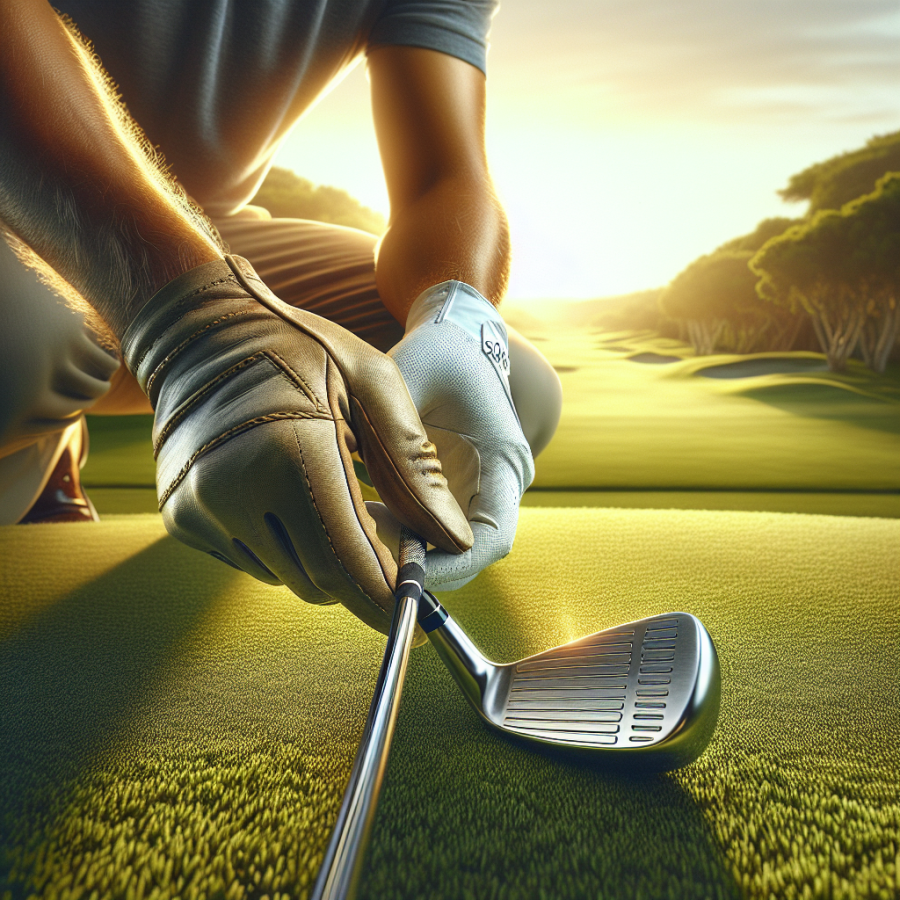How to Choose and Maintain the Right Golf Grip for Improved Game Performance
Getting the perfect golf grip is a crucial part of improving your game. Choosing the right grip depends on various factors, including hand size, personal preference, and the specific requirements of your game. But how do you maintain your grip for lasting performance? Below are some key guidelines on how to select and maintain the right golf grip for improved game performance.
1. Understand the importance of golf grips: Golf grips are an important part of the golf club because they allow the player to hold and swing the club effectively. An incorrect golf grip can lead to poor shots and an inconsistent game. Therefore, understanding its role in a swing is vital.
2. Choose the correct grip size: Golf grips come in different sizes ranging from junior and undersize to standard, midsize, and oversize. Getting the correct grip size can greatly enhance your swing effectiveness. Generally, golfers with smaller hands should choose smaller grips, while those with larger hands should opt for bigger grips. Your ideal grip size should allow the fingers in your upper hand to slightly touch the pad of your palm when you hold the club.
3. Consider the grip material: Golf grips are generally made of materials like rubber, corded, and wrap-style. Rubber grips are the most common and offer great comfort and durability. Corded grips provide exceptional traction and are ideal for golfers who play in wet weather conditions. Wrap-style grips resemble leather wraps and are preferred for their soft feel and comfort. Your grip material should suit your playing conditions and comfort needs.
4. Pay attention to the grip’s firmness: Grip firmness can significantly impact your shot and swing speed. Softer grips provide more cushioning, making them ideal for golfers with slow swing speeds, while firmer grips are perfect for players with fast swing speeds.
5. Regularly clean your grips: One key way of maintaining your golf grip is by cleaning them regularly. Over time, grips accumulate dirt, sweat, and oils from your hands, which can affect your swing. Use warm soapy water and a soft brush to clean your grips and rinse them thoroughly.
6. Regrip as necessary: Even with the best maintenance practices, your golf grips will wear out over time. It’s recommended to regrip your golf clubs at least once a year or every 40 rounds of golf. The frequency of regripping may increase depending on how often you play or if the grips show signs of wear and tear such as cracks, shiny patches, or worn spots.
Read also:
The Evolution and Influence of Golf Majors Throughout History
Understanding the Impact of Golf Grips on Swing Effectiveness
Golf grips are the only point of contact between a player and their club, making them highly significant in determining the effectiveness of the golf swing. In order to optimally improve your swing, it is important to know how the grip can make or break the swing, influence ball flight, and impact club face direction.
First off, how does the grip affect your swing? The answer lies in grip pressure. A firm, but flexible, grip allows a golfer to control the club without restricting the wrists or arms. Grip pressure also affects swing speed. Too much pressure can slow down your swing speed, which consequently impacts distance. On the other hand, a grip that is too loose can cause the club to slip, resulting in a lack of control and accuracy. Therefore, finding the right grip pressure is key to enhance your swing effectiveness.
The texture and dimension of a golf grip also play vital roles in swing effectiveness. Textures range from smooth to corded, with the latter offering more traction to prevent slippage. However, some players might find a corded texture uncomfortable. The choice of texture thus becomes a matter of personal comfort and preference, but it can crucially influence your swing control and comfort level during the game.
Similarly, the grip's dimensions, specifically its size and weight, can have a significant effect on your swing. A grip that is too big can limit wrist action, leading to a fade or a slice, while a grip that is too small can enhance wrist action, leading to a hook. In addition to this, a lighter grip will increase the total weight of the club and can increase swing weight, making the club feel head-heavy. On the other hand, a heavier grip decreases the total weight and swing weight, making the club feel lighter. Hence, the right grip size and weight are critical to achieve balance, control, and the desired swing and ball trajectory.
Your golf grip's quality and condition matter as well. Old, worn-out grips lose their traction and lead to inconsistent swings due to slippage. The loss of control can affect the golfer's confidence, causing hesitancy in their swings. Thus, keeping your grips in good condition or changing them regularly will ensure consistent swings and better playing performance.
The type of golf grip used can dramatically influence swing effectiveness too. There are three common types of grips: the interlocking grip, the Vardon grip, and the baseball grip.




